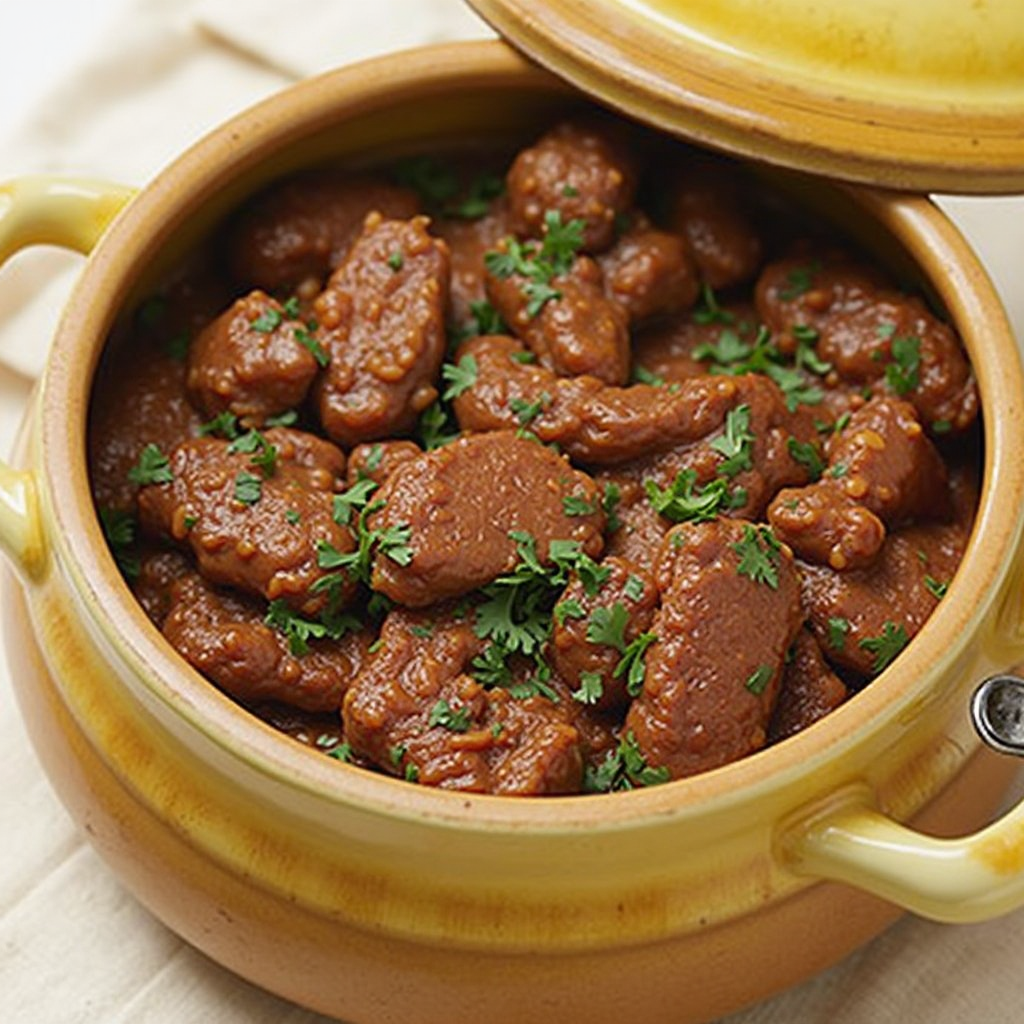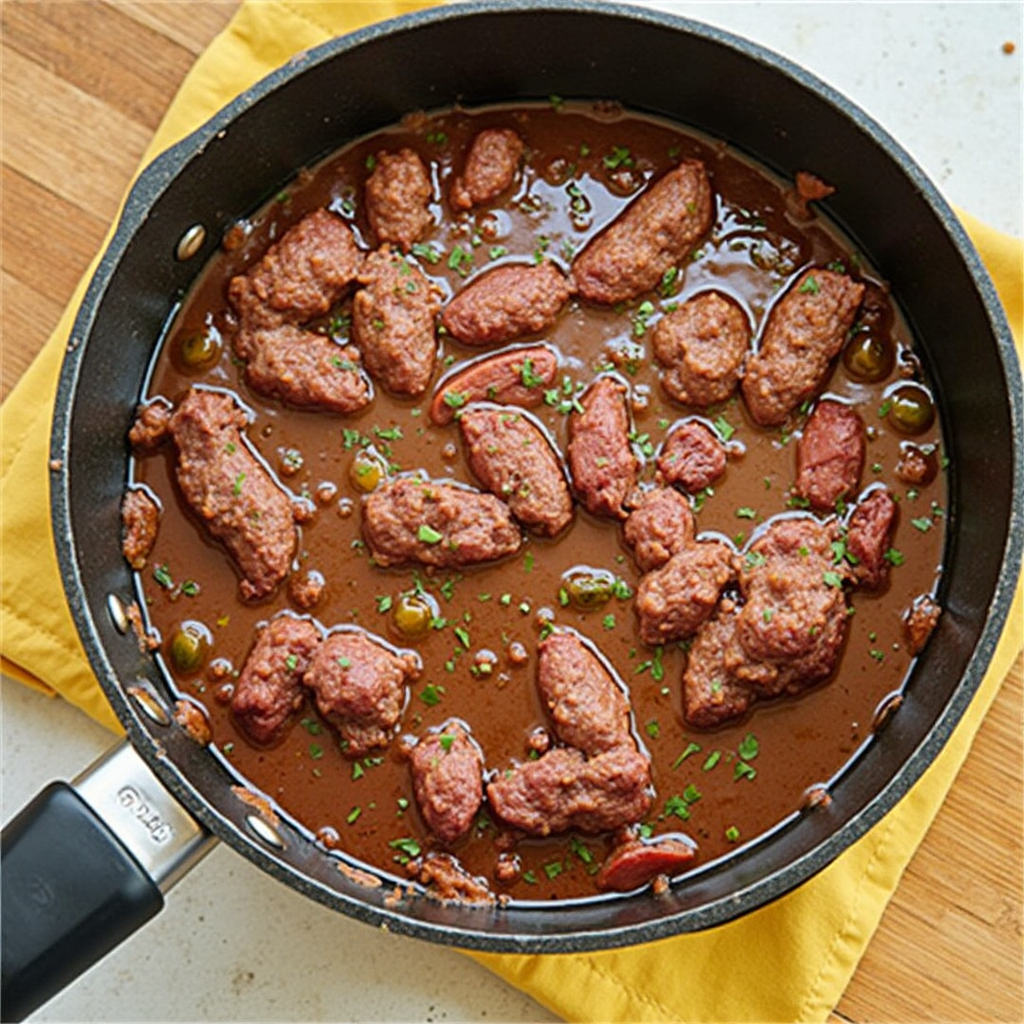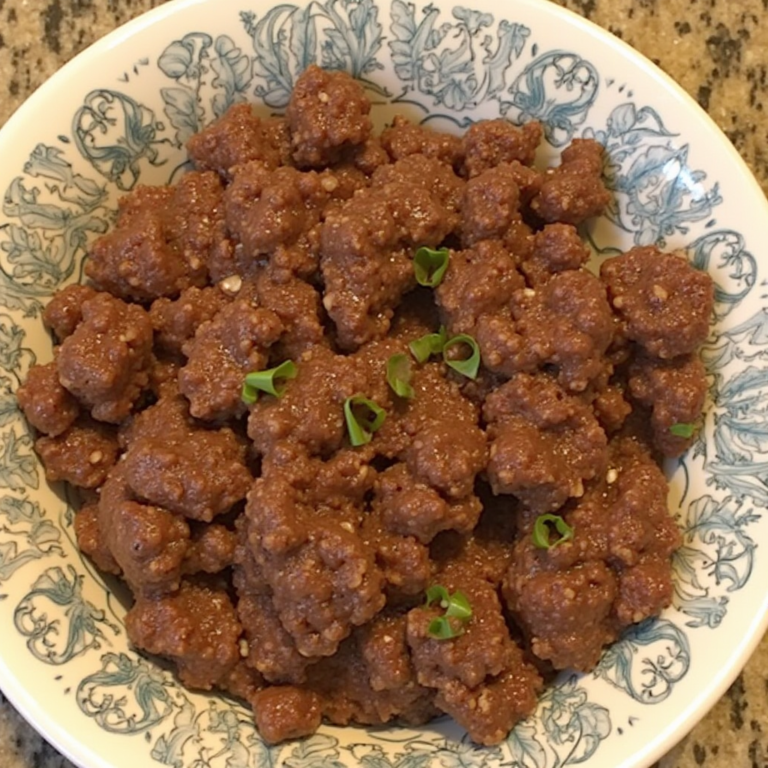Potted meat has long been a staple in kitchens worldwide, known for its versatility, convenience, and rich flavor. This guide will dive into what makes potted meat special, its many uses, and how to make it at home. We’ll also explore recipes, health benefits, and practical tips for incorporating this timeless favorite into your meals.
What Is Potted Meat?
Potted meat is a preserved spreadable meat paste, traditionally made by cooking meat and blending it with fat, seasonings, and spices. It is packed into jars or containers and sealed with a layer of fat to preserve its freshness for extended periods. This method dates back centuries when food preservation was essential for survival. Potted meat can be made from various types of meat, including beef, pork, chicken, or game, and is often flavored with herbs, spices, or even alcohol like brandy or sherry.
The History of Potted Meat
Potted meat has its roots in medieval Europe, where preserving meat was a necessity before the advent of refrigeration. By cooking meat slowly, blending it with fat, and sealing it, people could store it for weeks or even months. This method was particularly popular in England, where potted meats like potted shrimp and potted ham became culinary classics. Over time, potted meat evolved into a versatile ingredient, enjoyed both as a spread and as a component in more complex dishes.
Uses of Potted Meat
Potted meat is incredibly versatile and can be used in a variety of ways. Here are some popular uses:
- Spreads and Dips: Potted meat makes an excellent spread for crackers, toast, or sandwiches. Its rich, savory flavor pairs well with bread, cheese, and pickles.
- Cooking Ingredient: Use potted meat as a base for soups, stews, or casseroles. It adds depth and richness to dishes.
- Charcuterie Boards: Include potted meat on a charcuterie board alongside cheeses, cured meats, and fruits for a unique addition.
- Snacks: Pack potted meat in small containers for a portable, protein-rich snack.
- Gourmet Recipes: Elevate your cooking by incorporating potted meat into gourmet dishes like pâtés, terrines, or meat pies.
Health Benefits of Potted Meat
While potted meat is often associated with indulgence, it can also offer some nutritional benefits when consumed in moderation:
- High in Protein: Potted meat is a good source of protein, which is essential for muscle repair and growth.
- Rich in Vitamins and Minerals: Depending on the type of meat used, potted meat can provide essential nutrients like iron, zinc, and B vitamins.
- Energy-Dense: The combination of meat and fat makes potted meat a calorie-dense food, providing sustained energy.
However, it’s important to note that potted meat can be high in fat and sodium, so it should be enjoyed as part of a balanced diet.
Tips for Making and Storing Potted Meat
- Choose Quality Ingredients: Use fresh, high-quality meat and fat for the best flavor and texture.
- Season Generously: Don’t shy away from bold seasonings like garlic, thyme, or smoked paprika to enhance the flavor.
- Seal Properly: Ensure the meat is fully covered with a layer of fat to prevent air exposure and spoilage.
- Store Correctly: Keep potted meat in an airtight container in the refrigerator for up to a week, or freeze it for longer storage.
- Experiment with Meats: Try different types of meat, such as duck, venison, or lamb, for unique flavor profiles.
Incorporating Potted Meat into Modern Meals
Potted meat may be a traditional food, but it can easily be adapted to modern tastes and diets. Here are a few ideas:
- Gourmet Sandwiches: Spread potted meat on artisan bread and top with arugula, pickled onions, and a drizzle of balsamic glaze.
- Pasta Sauce: Stir potted meat into a creamy pasta sauce for a rich, meaty flavor.
- Stuffed Vegetables: Use potted meat as a filling for stuffed peppers or mushrooms.
- Breakfast Upgrade: Add a dollop of potted meat to scrambled eggs or a breakfast hash for a savory twist.
Potted meat is a timeless culinary tradition that continues to inspire creativity in the kitchen. Whether you’re making it from scratch or using it as a versatile ingredient, this preserved delicacy is sure to add depth and flavor to your meals.
For those who love easy-to-make, protein-rich dishes, consider pairing potted meat with recipes like Chicken Over Rice. The hearty flavors of rice and chicken complement the rich, creamy texture of potted meat beautifully.
Nutritional Benefits of Meat
While meat is known for its flavor, it also offers several nutritional benefits:
- High Protein Content: Excellent for muscle growth and energy.
- Rich in Iron and B Vitamins: Supports energy levels and overall health.
- Healthy Fats: Provides a feeling of satiety when eaten in moderation.
For a balanced meal that complements meat, check out our Marry Me Chicken Pasta recipe. Pairing the richness of meat with pasta creates a deliciously satisfying dish.

How to Make Traditional Potted
Ingredients
- 500g cooked meat (beef, or chicken).
- 100g butter or lard.
- Seasonings: salt, pepper, nutmeg, and garlic.
Instructions
- Prepare the Meat: Cook and shred the meat into fine pieces.
- Blend Ingredients: Use a food processor to combine the meat, fat, and seasonings until smooth.
- Pack and Seal: Spoon the mixture into sterilized jars and top with melted butter to create a seal.
- Store Properly: Refrigerate for up to a week or freeze for longer storage.
Creative Modern Twists on Potted
- Spicy Potted : Add chili flakes, paprika, and smoked garlic for heat and depth.
- Herbed Chicken Spread: Blend with rosemary, thyme, and parsley for a fresh twist.
- Vegan “Potted Meat”: Substitute mushrooms, lentils, and plant-based fats for a meat-free alternative.
How to Use Potted Meat
As a Spread
- Spread on crackers, toast, or baguettes for a quick snack.
- Serve as part of a charcuterie board with pickles, cheese, and olives.
In Sandwiches
- Add lettuce, tomato, and mustard for a classic lunch option.
- Use as a filling in wraps with fresh greens and shredded vegetables.
As an Ingredient
- Mix into pasta sauces or casseroles for added richness.
- Stir into mashed potatoes or soups for an enhanced flavor profile.
For other ideas on incorporating versatile ingredients like meat, browse our Blackstone Recipes, which offer innovative takes on classic meals.
Homemade vs. Store-Bought
Homemade Potted
- Advantages: Control over ingredients, flavors, and freshness.
- Ideal For: Those who prefer additive-free and preservative-free options.
Store-Bought Potted
- Advantages: Convenient and shelf-stable for quick meals.
- Popular Brands: Varieties with unique seasoning blends.
Choosing between homemade and store-bought depends on your preference for customization versus convenience.

FAQs About Potted Meat
Potted meat is a versatile and flavorful preserved food that has been enjoyed for centuries. Whether you’re new to potted meat or a seasoned enthusiast, you may have questions about its preparation, storage, and uses. Here are some frequently asked questions and expert tips to help you make the most of this culinary classic.
1. Is potted meat the same as pâté?
No, potted meat and pâté are not the same. While both are spreadable meat products, pâté often includes additional ingredients like cream, wine, or cognac and has a smoother, finer texture. Potted meat, on the other hand, is simpler and more rustic, typically made with just meat, fat, and seasonings.
2. How long does potted meat last?
The shelf life of potted meat depends on whether it’s homemade or store-bought. Homemade potted meat can last up to a week in the refrigerator when stored in an airtight container and sealed with a layer of fat. Store-bought potted meat, which often contains preservatives, can last several months when unopened. Always check the expiration date and follow storage instructions.
3. Can potted meat be frozen?
Yes, potted meat can be frozen to extend its shelf life. Store it in airtight containers or freezer-safe jars, and it will keep for up to three months. Thaw it in the refrigerator before use to maintain its texture and flavor.
4. Is potted meat healthy?
Potted meat can be a healthy option, especially when made at home with high-quality ingredients. It’s a good source of protein and can be free from artificial additives if you control the ingredients. However, it can be high in fat and sodium, so it’s best enjoyed in moderation as part of a balanced diet.
5. What are the best pairings for potted meat?
Potted meat is incredibly versatile and pairs well with a variety of foods. It’s delicious spread on crackers, fresh bread, or toast. It also makes an excellent addition to charcuterie boards, alongside cheeses, pickles, and fruits. For a more substantial meal, use it as a filling for sandwiches or as a flavorful addition to soups and stews.
Expert Tips for Perfect Potted Meat
- Use High-Quality Meat: The quality of the meat you use will directly impact the flavor of your potted meat. Choose fresh, high-quality cuts for the best results.
- Seal with Fat: Always seal the potted meat with a layer of fat after packing it into containers. This helps preserve freshness and prevent spoilage.
- Experiment with Flavors: Don’t be afraid to get creative with seasonings. Herbs like thyme, rosemary, and bay leaves, or spices like smoked paprika and black pepper, can add depth and complexity to your potted meat.
- Store Properly: Keep potted meat in airtight containers in the refrigerator or freezer to maintain its quality and extend its shelf life.
Potted meat is a timeless and adaptable food that can be enjoyed in countless ways. Whether you’re making it from scratch or using it as a convenient ingredient, these FAQs and tips will help you master the art of potted meat.
Conclusion
Potted meat is a versatile and timeless ingredient that can enhance your meals in countless ways. Whether enjoyed as a spread, a sandwich filling, or a cooking ingredient, its simplicity and flavor make it a favorite worldwide.

